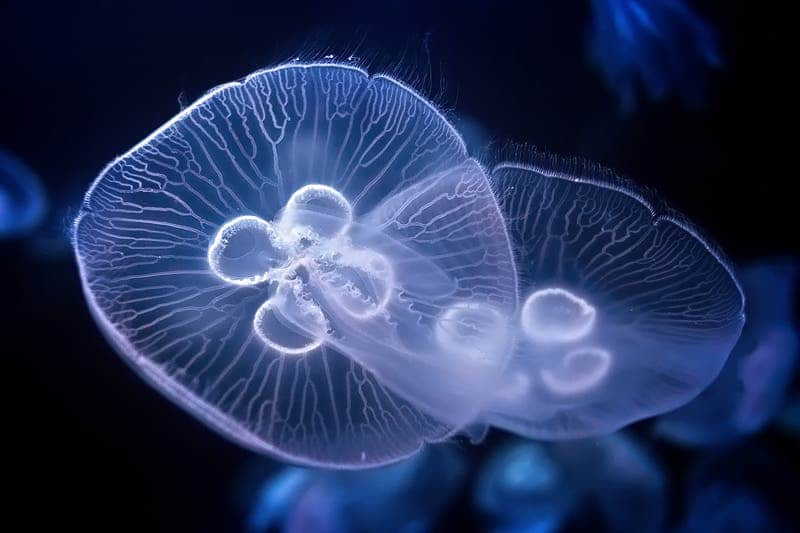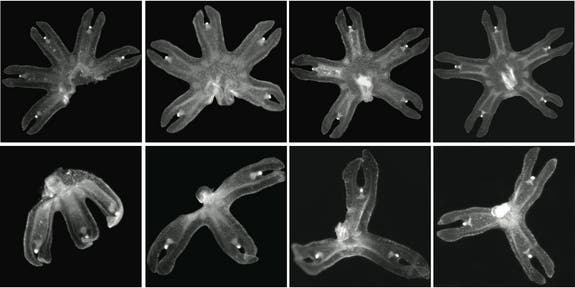A novel, previously unseen self-repair mechanism was reported by a team of researchers at Caltech who studied the moon jellyfish. A lot of animals, mostly invertebrates, grow back their lost limbs after these are bitten off by predators or lost in an accident. The moon jellyfish, however, employs a different tactic altogether: instead of expending a lot of energy to regrow its lost limb, the animal re-arranges the limbs it has left to regain symmetry. Even when it’s left with two limbs out of its initial eight, the jellyfish will still re-arrange itself. This sort of mechanism might prove extremely useful in designing self-repairing robots.
Back in symmetry

Aurelia aurita or the moon jellyfish is one of the most common jellyfish species in the world. It’s translucent, usually about 25–40 cm and easily recognizable by its four horseshoe-shaped gonads visible at the center of the bell. It’s remarkable though that given the animal has been widely studied, it’s only recently that we learn of its unique self-repair ability.
“We’ve now observed another self-repair mechanism,” says researcher Michael Abrams of the California Institute of Technology (Caltech), a graduate student in biology and biological engineering. “It kind of broadens our definition, a little bit, of self-repair.”
Abrams and colleagues focused on larval moon jellies, known as ephyrae. During this stage, the juveniles only measure 1cm in diameter, but they’re limbs look and behave just as in the adult stage. Typically, the moon jellies are born with eight limbs arranged in a radial pattern.
Initially, the researchers wanted to see if the jellyfish could regrow its lost limbs, like other invertebrates. So they amputated one or several limbs from anesthetized ephyrae then introduced them to their familiar salt water environment. The jellyfish didn’t regrow the lost limbs, but instead behaved far more remarkably.

In the image above, the top row shows the process of symmetrization after losing four of eight limbs. The bottom row shows the same process after losing five of eight limbs. Basically, the symmetrization occurred with whatever limbs the jellyfish had left, even just with two.
“Pretty quickly, we realized that they were doing something very different than what anyone had ever talked about before,” Abrams says.
The jellyfish likely adapted this feature because symmetry is essential to its survival. The symmetrical limbs act like paddles which help the animal swim and pull food towards the central mouth. “And you can imagine how this paddling surface would be disturbed if you have a big gap between the arms,” Abrams said.
To study how the moon jellyfish re-arranges itself, the researchers used a cell proliferation stain to track cell death and birth. Even more surprising, the animals didn’t use cell growth or shrank parts to re-purpose itself. Instead, most likely the pulsing of the muscles is behind the mechanism. As the creatures swims about, it pulls the remaining arms into new positions. When they put this hypothesis to the test by applying muscle relaxers, the amputee jellyfish were unable to regain symmetry, as reported in PNAS.
Remember, all of this happen inside a creature with no brain! Robots, aren’t that far behind so this neat trick might be helpful. A damaged robot can’t grow back a mechanical part, put it can sure reconfigure itself to become functional again. The moon jellyfish might serve as an example.
Was this helpful?



